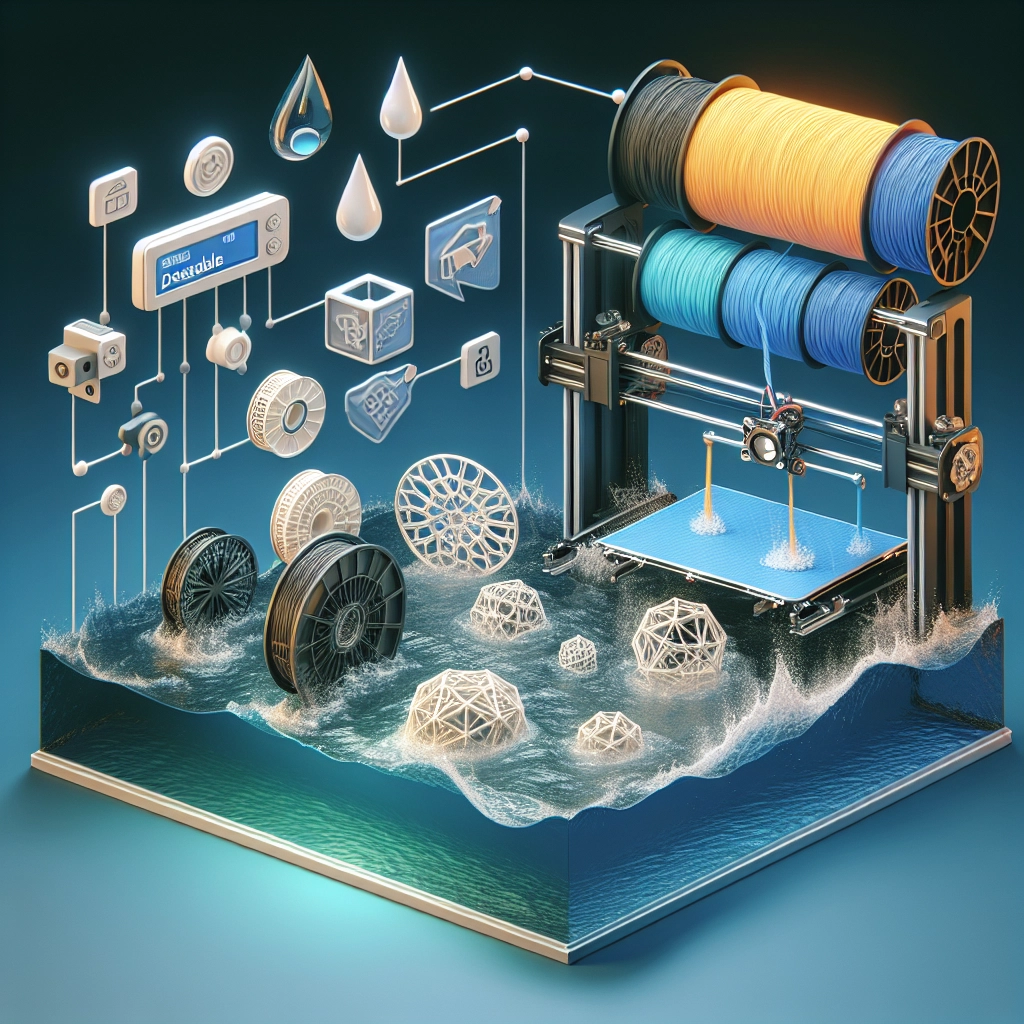The Benefits of Water-Soluble Filament in 3D Printing
If you’re diving into the world of 3D printing, you might have come across the term "water-soluble filament." At first glance, it may not sound like the most exciting thing on the planet, but trust me—the benefits of using water-soluble filament can be game-changing for both beginners and seasoned pros. So grab a cup of coffee, settle in, and let’s explore why this unique material could be your new best friend in the 3D printing universe!
What Is Water-Soluble Filament?
First things first: what exactly is water-soluble filament? This type of filament is designed to dissolve in water, making it an ideal support material for complex or intricate 3D models. The most commonly used water-soluble filament is PVA (Polyvinyl Alcohol). It’s non-toxic and biodegradable, ensuring that our planet stays a bit happier, too! So, not only is it functional, but it’s also a more environmentally friendly option compared to some traditional filaments.
Support Structures Made Easy
One of the most standout benefits of using water-soluble filament is its ability to create support structures. If you’ve ever tried to print a model with overhangs or intricate designs, you know how tricky it can be without the right support. Standard support materials can require tedious post-processing to remove, leaving you with the dreaded task of sanding or filing down to achieve a clean finish. But with PVA, you can simply toss your model into water after printing, and watch as those support structures dissolve away, leaving you with a smooth, polished end product. Talk about a time-saver!
Get Creative With Your Designs
With the hassle of support removal significantly minimized, designers are free to get more creative with their 3D models. Complex geometric shapes, intricate trinkets, and ambitious prototypes become a breeze to make. Water-soluble filament opens the door for ambitious creators who may have shied away from challenging designs that require stable supports. This freedom can lead to innovative designs that were once limited by the capabilities of traditional support materials.
A Cleaner Printing Process
Let’s face it, 3D printing can get a little messy—from stringing to warping, and the ever-annoying clogs. By using water-soluble filament, you can help reduce some of that mess. Since PVA dissolves in water, there’s little to no leftover residue on your final print. This isn’t just about aesthetics; it’s also about making the printing process smoother and more straightforward, leading to a better overall experience for both hobbyists and professionals alike.
Compatibility and Filament Pairing
Water-soluble filaments like PVA are pretty versatile, but they work best when paired with specific materials, such as PLA or ABS. This compatibility allows users to combine the strengths of different filaments in one project. You can print a durable base model using PLA or ABS while utilizing PVA as the support, making it easier to handle modifications or adjustments in your designs.
It’s essential, of course, to ensure that your 3D printer is compatible with the setup you have in mind. Most modern 3D printers handle this well, but a little research can go a long way in avoiding headaches down the line!
Environmentally Friendly
In a day and age where being eco-conscious is more important than ever, using water-soluble filament like PVA is a nod toward more sustainable practices in 3D printing. Made from renewable sources, it’s a biodegradable option that helps us tread a little lighter on the Earth. Reducing plastic waste is a priority, and choosing a filament that can break down in water is a fantastic step in the right direction.
Conclusion
So there you have it! The benefits of water-soluble filament in 3D printing are plentiful, from simplifying support structures to enabling more intricate designs. With its eco-friendly nature, user-friendliness, and compatibility with other materials, it’s no wonder that more and more creators are hopping on the water-soluble train. Whether you’re a casual hobbyist or an aspiring designer, this filament could very well elevate your 3D printing game. So why not give it a go? Embrace the world of possibilities—and let your creativity flow like water!

